CANNIBAL HOLOCAUST: Viscera, Viciousness And Vérité
To many viewers, Cannibal Holocaust is a classic for the wrong reasons; infamous instead of famous. Some consider it a classic of manipulation for duping the more gullible members of its audience into thinking they've seen a snuff film. Some consider it a classic of bad taste, a film that claims to have a profound message while wallowing in the most misanthropic extremes of humanity's bad behaviors. Others vilify the film and its creators for the unfaked, gruesome deaths of real animals that appear alongside the falsified 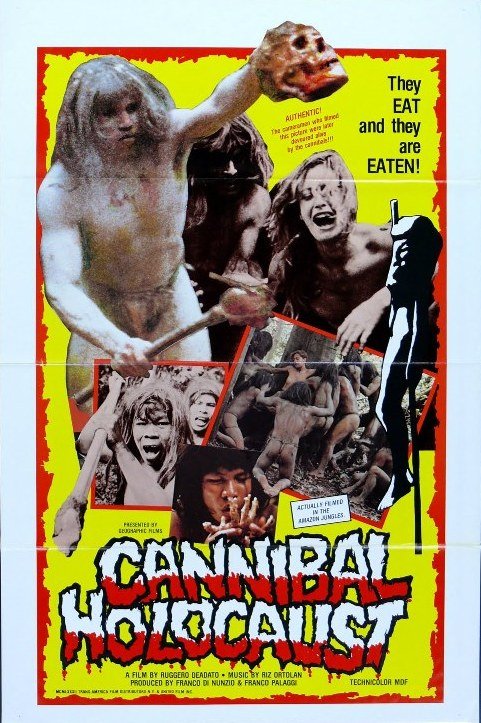 human violence.It is difficult for many to get beyond those issues. However, there is more going on in Cannibal Holocaust than just shock tactics. It is an uncompromising piece of work that uses the extremes of its content to challenge the viewer's feelings and perceptions about society and the role media plays in shaping it. The results aren't pretty and never spare the viewer's feelings - but there is a sincere motivation and some intelligent ideas behind the carnage that are well worth exploring for the brave horror fan.To start with, you might be surprised to discover that Cannibal Holocaust has an clever, intricately structured plot. It begins with anthropology professor Harold Monroe (Robert Kerman) venturing to the "Green Inferno" in the heart of the Amazon to find a quartet of documentary filmmakers who disappeared while trying to find if cannibal tribes still exist. After risking his life more than once, Monroe fails to find the filmmakers but does discover their footage. He brings it back to New York, where network executives plan to use it for a television special. No one is prepared for what they find on the reels, which reveal
human violence.It is difficult for many to get beyond those issues. However, there is more going on in Cannibal Holocaust than just shock tactics. It is an uncompromising piece of work that uses the extremes of its content to challenge the viewer's feelings and perceptions about society and the role media plays in shaping it. The results aren't pretty and never spare the viewer's feelings - but there is a sincere motivation and some intelligent ideas behind the carnage that are well worth exploring for the brave horror fan.To start with, you might be surprised to discover that Cannibal Holocaust has an clever, intricately structured plot. It begins with anthropology professor Harold Monroe (Robert Kerman) venturing to the "Green Inferno" in the heart of the Amazon to find a quartet of documentary filmmakers who disappeared while trying to find if cannibal tribes still exist. After risking his life more than once, Monroe fails to find the filmmakers but does discover their footage. He brings it back to New York, where network executives plan to use it for a television special. No one is prepared for what they find on the reels, which reveal 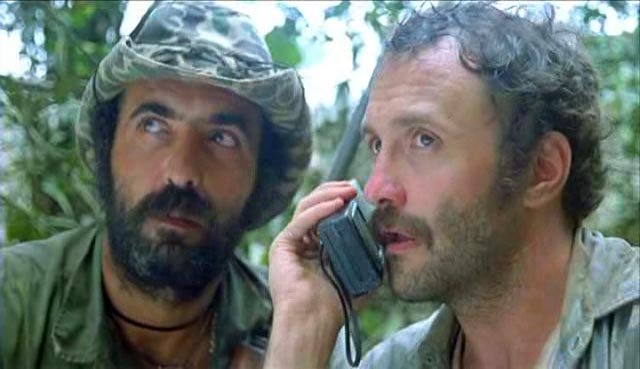 both the final fate of the lost filmmakers and the awful truth about what they were actually doing in the Amazon.Over three decades have passed since Cannibal Holocaust was first released in theaters and yet it hasn't lost its ability to shock. The sequences involving cannibalism are done with makeup effects but achieve a queasy vérité vibe from the use of real jungle settings and locals made up as tribesmen, an effect that is doubly enhanced when the filmmakers place these events in the context of convincing, technically raw "footage" to represent the last moments of the lost filmmakers. It's worth noting that the filmmakers got into legal trouble because authorities frequently mistook the latter scenes for real snuff footage.
both the final fate of the lost filmmakers and the awful truth about what they were actually doing in the Amazon.Over three decades have passed since Cannibal Holocaust was first released in theaters and yet it hasn't lost its ability to shock. The sequences involving cannibalism are done with makeup effects but achieve a queasy vérité vibe from the use of real jungle settings and locals made up as tribesmen, an effect that is doubly enhanced when the filmmakers place these events in the context of convincing, technically raw "footage" to represent the last moments of the lost filmmakers. It's worth noting that the filmmakers got into legal trouble because authorities frequently mistook the latter scenes for real snuff footage.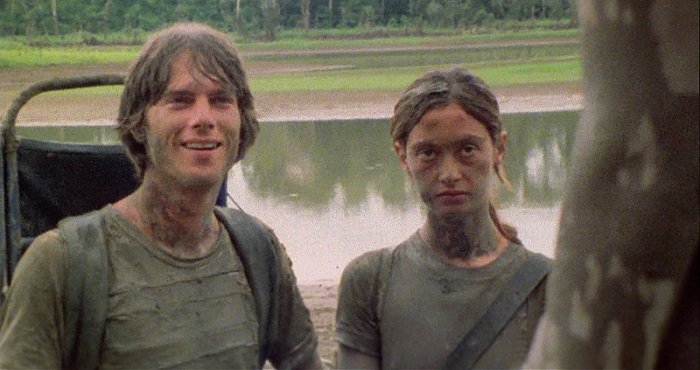 Even hardcore horror types often recoil from Cannibal Holocaust because of the real animal deaths shown in the film, particularly a lengthy sequence where a tortoise is slowly dismembered in preparation for cooking after being killed by the crew. These scenes are endurance tests by design. Each viewer will have to make his or her own decision as to whether they can deal with these scenes - but they definitely add to the film's cumulative effect, conveying the cruelty of the characters and setting while also making the viewer question the overall reality of the other scenes. The tactic is ruthless but undeniably effective.
Even hardcore horror types often recoil from Cannibal Holocaust because of the real animal deaths shown in the film, particularly a lengthy sequence where a tortoise is slowly dismembered in preparation for cooking after being killed by the crew. These scenes are endurance tests by design. Each viewer will have to make his or her own decision as to whether they can deal with these scenes - but they definitely add to the film's cumulative effect, conveying the cruelty of the characters and setting while also making the viewer question the overall reality of the other scenes. The tactic is ruthless but undeniably effective.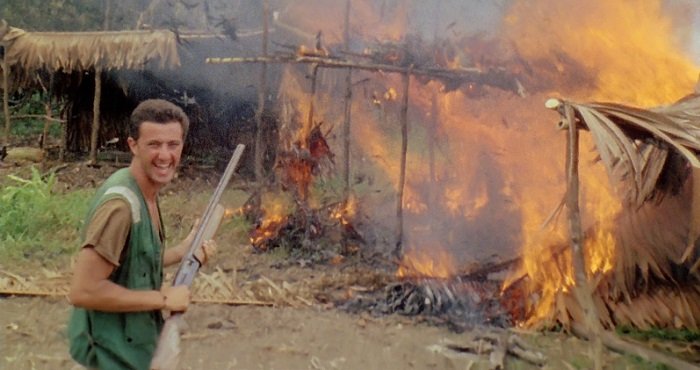 However, it is important to think about why Cannibal Holocaust goes to these extremes. Deodato has often said that the film's often angry, confrontational tone was rooted in his rage toward the Italian news media for their exploitative treatment of real life tragedies of Italian life in the '70s, particularly the violent activities of the Red Brigade. The film also has an inherent critique of the mondo filmmaking genre spawned by Jacopetti/Prosperi successes like Mondo Cane, which often mixed real atrocities with faked footage (a tactic employed by the "documentarians" in the film).
However, it is important to think about why Cannibal Holocaust goes to these extremes. Deodato has often said that the film's often angry, confrontational tone was rooted in his rage toward the Italian news media for their exploitative treatment of real life tragedies of Italian life in the '70s, particularly the violent activities of the Red Brigade. The film also has an inherent critique of the mondo filmmaking genre spawned by Jacopetti/Prosperi successes like Mondo Cane, which often mixed real atrocities with faked footage (a tactic employed by the "documentarians" in the film).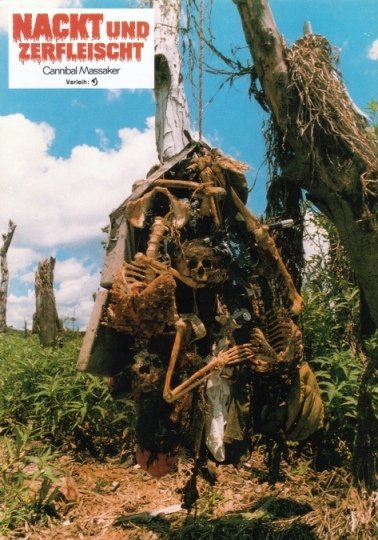 Critics usually focus on the "who are the real savages" angle of the film, criticizing it for trying to have its cake and eat it too by wallowing in the kind of cruel behavior it condemns. However, that seems like a short-sighted way for those critics to write off something that makes them uncomfortable: after all, how can a filmmaker communicate their negative stance on something unless they depict it?More importantly, that line of criticism misses out on the real message in Cannibal Holocaust. Beneath the surface talk of civilization vs. savagery, the film is more concerned with how its characters process what they see. Note that many times in the film, characters pursue some aim until they see more than they want to see, only for another character to force them to look back at the ugly truth they want to avoid. One can feel Deodato's directorial hand in these moments, reminding the viewer that the ugly truth can't be avoided. The cast, mostly unknown except for '70s porn regular Robert Kerman, plays these horrific tableaus straight - and Deodato gives them the settings and content to make their performances feel all too real.On a similar note, once the footage of the filmmakers is presented in third act, Deodato makes a point of intercutting back to the people watching the footage at key moments. During these cutaways, the characters often discuss how real the footage is, what the intentions were behind shooting it and whether or not it should be shown to others. A simple shock-show would never bother with these moments. Instead, Deodato takes the
Critics usually focus on the "who are the real savages" angle of the film, criticizing it for trying to have its cake and eat it too by wallowing in the kind of cruel behavior it condemns. However, that seems like a short-sighted way for those critics to write off something that makes them uncomfortable: after all, how can a filmmaker communicate their negative stance on something unless they depict it?More importantly, that line of criticism misses out on the real message in Cannibal Holocaust. Beneath the surface talk of civilization vs. savagery, the film is more concerned with how its characters process what they see. Note that many times in the film, characters pursue some aim until they see more than they want to see, only for another character to force them to look back at the ugly truth they want to avoid. One can feel Deodato's directorial hand in these moments, reminding the viewer that the ugly truth can't be avoided. The cast, mostly unknown except for '70s porn regular Robert Kerman, plays these horrific tableaus straight - and Deodato gives them the settings and content to make their performances feel all too real.On a similar note, once the footage of the filmmakers is presented in third act, Deodato makes a point of intercutting back to the people watching the footage at key moments. During these cutaways, the characters often discuss how real the footage is, what the intentions were behind shooting it and whether or not it should be shown to others. A simple shock-show would never bother with these moments. Instead, Deodato takes the 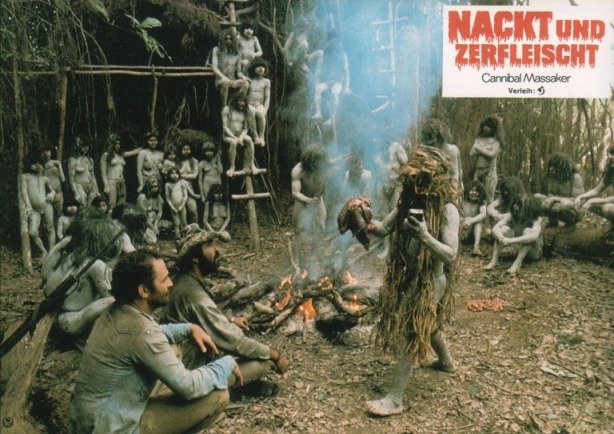 opportunity to make the viewer question what they are seeing, the motivations of those who created these sights and what responsibility the viewer plays in the whole scenario. Pretty heady stuff for a film that is often written off as a gore epic.Finally, it is important to note the care and craftsmanship applied to the film by Deodato and his collaborators. Gianfranco Clerici's script has an ingenious, mystery-style structure that slowly draws the audience in, arousing their curiosity before it lowers the boom with its third act. Sergio D'Offizi's cinematography captures both the beauty and the horror of the Amazon settings in high style and editor Vincenzo Tomassi, who worked on many of Lucio Fulci's best films, gives the proceedings a carefully modulated pace. Deodato harnesses their contributions with skill, creating a film whose sense of style belies its disturbing content: it's all the more unnerving because it's so smartly made.Special credit must also be given to the great, sadly departed Riz Ortolani, who wrote one of the greatest horror film scores ever composed here. He got his big break with the team of Jacopetti and Prosperi, scoring their controversial mondo films and developing an effective technique where he would craft the loveliest melodies for the most upsetting sequences.
opportunity to make the viewer question what they are seeing, the motivations of those who created these sights and what responsibility the viewer plays in the whole scenario. Pretty heady stuff for a film that is often written off as a gore epic.Finally, it is important to note the care and craftsmanship applied to the film by Deodato and his collaborators. Gianfranco Clerici's script has an ingenious, mystery-style structure that slowly draws the audience in, arousing their curiosity before it lowers the boom with its third act. Sergio D'Offizi's cinematography captures both the beauty and the horror of the Amazon settings in high style and editor Vincenzo Tomassi, who worked on many of Lucio Fulci's best films, gives the proceedings a carefully modulated pace. Deodato harnesses their contributions with skill, creating a film whose sense of style belies its disturbing content: it's all the more unnerving because it's so smartly made.Special credit must also be given to the great, sadly departed Riz Ortolani, who wrote one of the greatest horror film scores ever composed here. He got his big break with the team of Jacopetti and Prosperi, scoring their controversial mondo films and developing an effective technique where he would craft the loveliest melodies for the most upsetting sequences.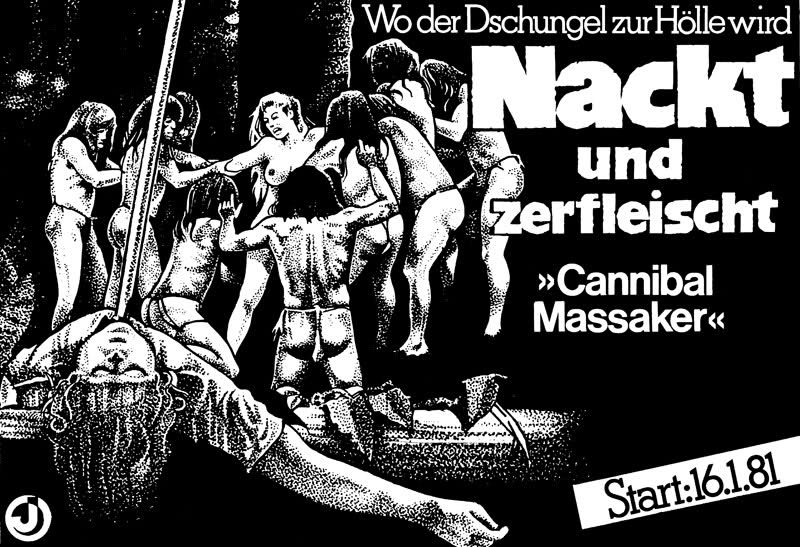 Ortolani's Cannibal Holocaust score represents his most skillful use of this technique, with his lush Euro-melodies creating a musical backdrop that is either ironically lovely or soul-searchingly mournful. The jarring juxtaposition of sonic beauty and scarring visuals is the most potent weapon in Deodato's stylistic arsenal - and he uses it for maximum effect here: the melodies will linger in your mind long afterwards, right alongside the grim imagery.Sadly, the shock value that gives Cannibal Holocaust its staying power unfortunately obscures its true value to many audience members. However, those who can summon up the intestinal fortitude to stare down its horrors will discover that this is a horror film whose intelligence is as savage as its imagery. If you want to experience the extremes of the genre - both viscerally and thematically - Cannibal Holocaust is a film that you must see.
Ortolani's Cannibal Holocaust score represents his most skillful use of this technique, with his lush Euro-melodies creating a musical backdrop that is either ironically lovely or soul-searchingly mournful. The jarring juxtaposition of sonic beauty and scarring visuals is the most potent weapon in Deodato's stylistic arsenal - and he uses it for maximum effect here: the melodies will linger in your mind long afterwards, right alongside the grim imagery.Sadly, the shock value that gives Cannibal Holocaust its staying power unfortunately obscures its true value to many audience members. However, those who can summon up the intestinal fortitude to stare down its horrors will discover that this is a horror film whose intelligence is as savage as its imagery. If you want to experience the extremes of the genre - both viscerally and thematically - Cannibal Holocaust is a film that you must see.


